When Good Food Turns Bad
Is that not an intriguing title? Wish I'd thought of it. I didn't. It's from a great site, Kitchen Table Scraps: Eating Well, Saving Dough (www.kitchentablescraps.com). The author and chef, Renee, graduated from the French Culinary Institute's Pastry Program in 2006, and has worked in several notable New York restaurants. I share this info so you can see we're getting some advice from a seasoned pro. Renee knows what she's talking about.
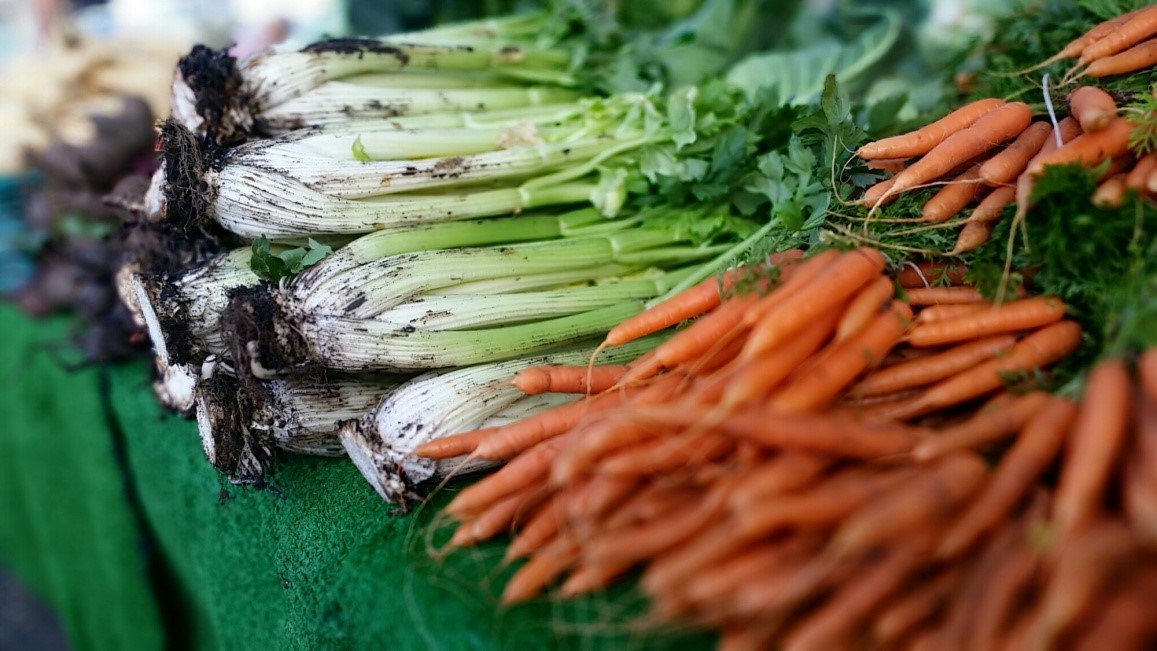
Renee starts with some food safety: "With vegetables, the troublemakers are either dirt, your hands, or your cutting board. So always wash your hands, cutting board, and knife before you start preparing food. Second, the best time to wash vegetables is right before you prepare them. Washing veggies damages the skin, and can lead to them spoiling or drying out faster than unwashed veggies (though I make some exceptions to this rule). If vegetables have areas that are packed with dirt (the root end of onions and leeks, for example) cut these areas off before washing the vegetable, then you're not spreading the dirt around to the inside of the vegetable. All that said, most vegetables pose a very low risk of food-born illness; the real challenge is buying the right quantities and storing in the right way so they don't go bad before you have a chance to eat them up."
Next, here's what she says about some common veggies and what to do if they're on their way out:
POTATOES and ROOT VEGETABLES:
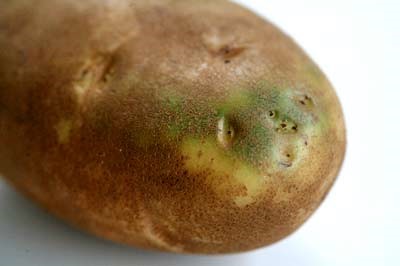
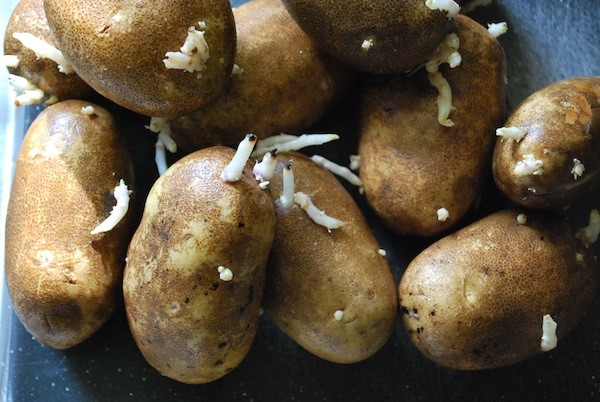
While potatoes don't rot in an openly stinky way, they can develop sprouts that are not just unattractive, they're bad for you. The green portions and the sprouts have unhealthy levels of a naturally occurring toxin called solanine. Cut any green and all sprouts off. The best way to avoid sprouting is through proper storage. Best storage methods?
· In a paper bag or box in a cool place (think garage or basement) and with an apple. The fumes exuded by the apple will extend the lifetime of the potato.
· The fridge is also acceptable if you need long term storage.
· But you can leave them out at room temperature for around a month, provided they are out of the light; use the apple-in-the-bag trick.
If other root veggies (carrots and beets) go a little dried and limp, they're still fine to eat. But to prevent that, store them in a cold, well ventilated garage or basement makes. They like this best. Otherwise the fridge suffices. If you buy roots with the stems on, remove the stems and store the veggies separately (the stems will still try to grow and they'll sap the roots of some of their goodness).
GARLIC and ONIONS:
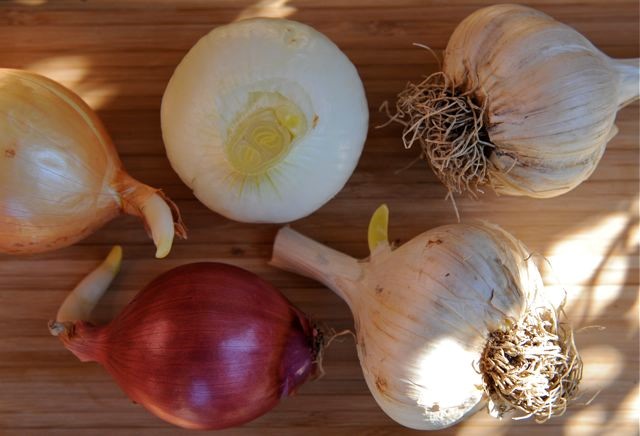
Those you typically buy in the store are conditioned to withstand longer storage. The plants are edible in their younger, milder forms (spring arrivals), but they're much more perishable. If either have sprouted, they're still good to eat, but the sprouts have an unpleasant, bitter flavor. If they sprout, cut each garlic clove and onion in half and remove the sprout. If onions have a bruised area, simply cut it away before cooking. When buying, search for firm garlic and onions, then store them in a cool and dark place.
SPROUTS:
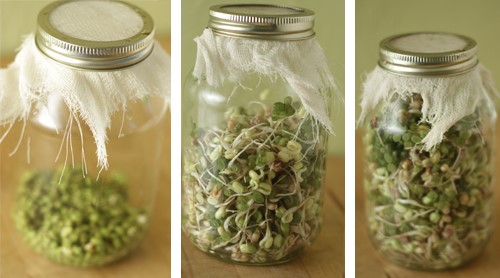
If you've ever done your own sprouting, you know the conditions for hygienic sprouting are crucial. If not kept properly (during growth and storage), they can harbor nasty bacteria. So be very careful with them. Think of fresh sprouts like fish: only buy them from stores you trust and don't buy them more than a day in advance especially if you plan to eat them raw.
GREENS:

There are 3 categories: crisp, tender, and hearty.
· Crisp greens (romain, iceberg lettuce) don't keep long. To maintain crispness, keep them in a plastic bag (but not fully sealed) and preferably swaddled with a damp paper towel or two.
· Tender greens (spinach, arugula, butter lettuce) don't turn limp and brown like the crisp guys. They dissolve into green slime. Moisture is slightly less important for these greens, but aeration is key. Skip the paper towels and just store in an unsealed plastic bag.
· Hearty greens (cabbage, broccoli, kale) have a much longer holding time and tend to turn yellow or brown as they go bad. Store them in an unsealed bag. If they have yellow or brown spots, remove discolored areas or leaves.
There's good news for all types of greens: If they've started to go bad you can pick through them and usually salvage much of the plant. The prevailing wisdom is to wash them ONLY right before you use them.
MUSHROOMS:
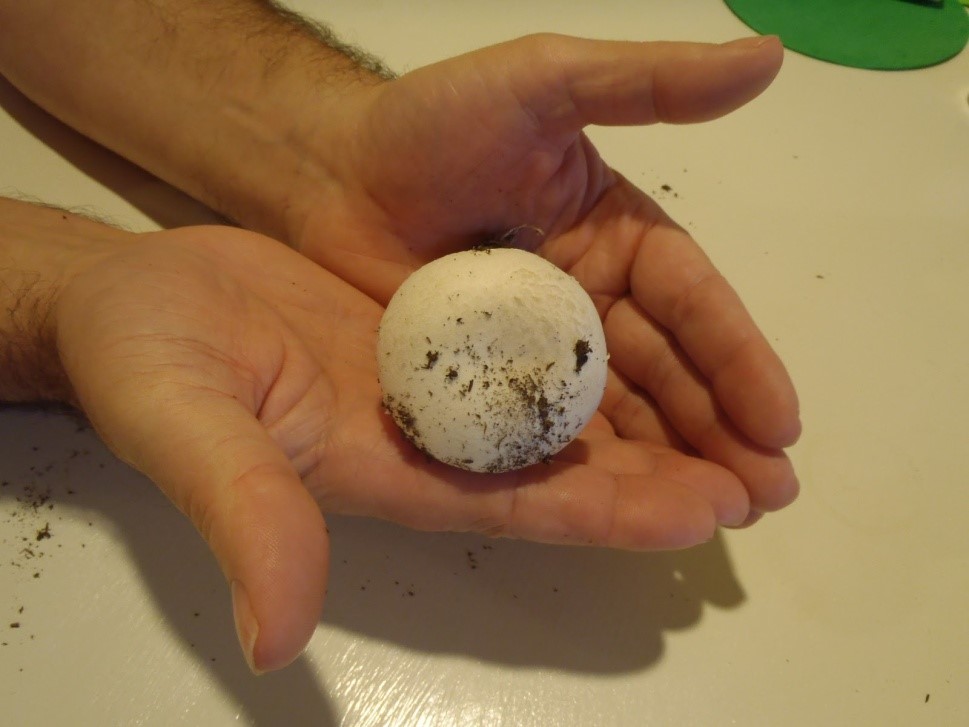
Renee admits there's controversy about this, but she doesn't wash her mushrooms. They're like sponges, and washing them introduces a lot of excess water which absolutely affects the way they cook. While washing does remove the outside dirt, a portion of that dirty water is absorbed right back into the mushroom. Just use a clean cloth to remove all dirty areas and carefully rub the surface clean. They're delicate, so the best storage advice is to handle them as little as possible. And storage?
· Keep mushrooms that come in plastic-wrapped cartons in their original container.
· Mushrooms bought in bulk can be stored in an unsealed plastic bag with a damp paper towel.
· The best place to store them is NOT in the fridge (this is a good place for them to pick up moisture). A cold, dark garage or basement is better if you have it. If not, the fridge is your second, better-than-nothing option.
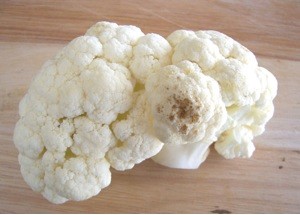
Finally, some CAULIFLOWER info I passed on in 2014 (July 25th, "The Scoop on Cauliflower and Dark Spots") that's worth repeating:
While the discoloration is harmless, it's a signal that decay is starting. These spots are eventually accompanied by the cauliflower turning yellow and developing soft, mushy curds. Various commercial produce sites explain that brown spots on cauliflower have likely resulted from moisture or condensation on the cauliflower. Their advice? If the rest of the cauliflower is fine, just scrape these off. OK, good to know. And this is what most of us have always done anyway, but the validation from the pros is always nice.
- www.framlinghammarket.co.uk
- www.simplyrecipes.com
- www.anoregoncottage.com
- www.awaytogarden.com
- www.soapqueen.com
- www.safeleafygreens.com
- www.muttnut.blogspot.com
- www.ipt.us.com
 Alice Osborne
Alice Osborne
Weekly Newsletter Contributor since 2006
Email the author! alice@dvo.com
